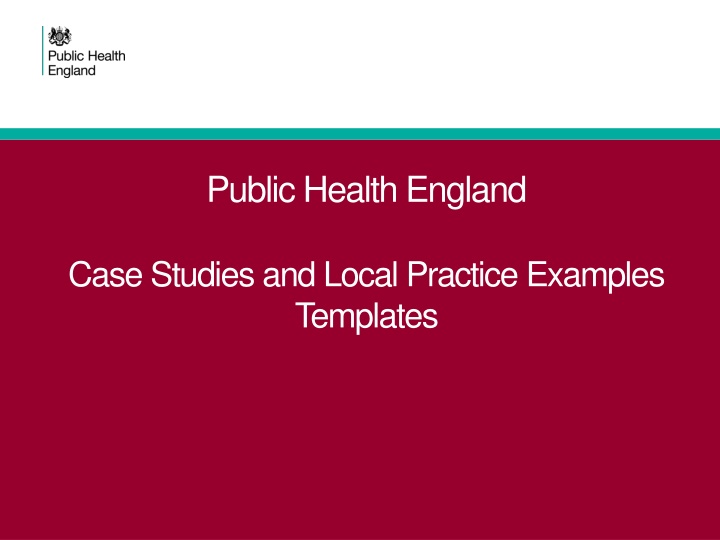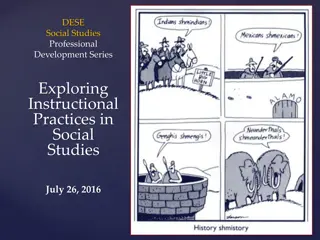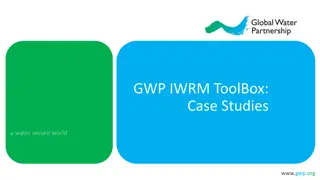Writing Effective Case Studies and Local Practice Examples
Understand the purpose of writing case studies and local practice examples, know your audience, define the issue clearly, demonstrate the impact, and provide concise results to showcase improvement and influence decision-making effectively.
Download Presentation

Please find below an Image/Link to download the presentation.
The content on the website is provided AS IS for your information and personal use only. It may not be sold, licensed, or shared on other websites without obtaining consent from the author.If you encounter any issues during the download, it is possible that the publisher has removed the file from their server.
You are allowed to download the files provided on this website for personal or commercial use, subject to the condition that they are used lawfully. All files are the property of their respective owners.
The content on the website is provided AS IS for your information and personal use only. It may not be sold, licensed, or shared on other websites without obtaining consent from the author.
E N D
Presentation Transcript
Public Health England Case Studies and Local Practice Examples Templates
Case studies a short guide to writing case studies Understand the purpose or intention: Why are you writing it? Who do you want to influence? What are they key messages? Case studies provide an opportunity to show case good or promising practice. They are frequently used to describe a problem or issue, which logically and step by step has been addressed to show impact or improvement GETTING STARTE D Know your audience: Will they understand what you are trying to convey? Will it maintain their interest? Will it have impact or encourage them to take notice? A well written case study will be informative, maintain interest and prompt action or further inquiry so remember the 4 core principles. Defining the issue: Provide an introductory statement clearly outlining the issue or problem Provide relevant background Outline the actions used to solve the problem TELLING YOUR STORY Clarity Demonstrate the impact: Show what change or improvement has been made State how you measured impact Specify the return on investment Provide data and clear evidence of improvement Show how this impacted on service users Bring the case study alive with a relevant short quote or feedback Impact Concise THE RESULTS Relevant
Case study template Title (Word count 65 max) Include a short descriptive title which reflects the example and will capture the readers interest Include a short focussed summary; What was the issue or starting point? What did you want to achieve? How was this supported? Provide a concise overview of the development; Include details of the process and steps taken as part of the development Describe the changes and interventions Background (Word count 250 Max) Practice development (Word count 300 Max) Measuring impact (Word count 300 Max) Describe the short and long term improvement for the individual for the service provision Include: Any feedback received Improvements which were secured for the parents / family Information about return on investment (ROI) or value for money Any numeric data e.g. survey results Provide key areas of: Learning and what worked Things you might do differently Learning (Word count 500 Max) Include relevant links and references References
Local practice examples Understand the purpose or intention: Why are you writing it? What do you want to showcase? What are they key messages? Local practice examples can be used to celebrate successes and to share what works. They are not formal research however they make an invaluable contribution to knowledge translation and learning or research generation GETTING STARTE D Know your audience: Will they understand what you are trying to convey? Will it maintain their interest? Will it help others or influence decisions? A well local practice example will be informative, maintain interest and prompt action or further inquiry so remember the 4 core principles. Defining the issue: Clearly outline the practice and why change was needed Describe your aims & objectives Be succinct in describing your actions TELLING YOUR STORY Clarity Demonstrate the impact: Show what change or improvement has been made Provide key learning points to guide others Show evidence of what worked and why Include any monitoring or evaluation Show how this impacted on service users Bring the case study alive with a relevant short quote or feedback Share what your next steps will be Impact Concise THE RESULTS Relevant
Local practice example template Include a short descriptive title which reflects the key focus and main benefit Title (Word count 65 max) Include a short focussed description of your practice example & the main benefit Description (Word count 100 max) Provide a concise overview of your aims and objectives Describe the starting point, baseline and include useful data about population or demographics Explain how the need arose Context what was the aim? (Word count 150 max) Provide clear details of: What you activity you undertook Who was involved and why Method what did you do? (Word count 200 max) How was this measured? Can you show evidence of impact? What has changed? Was there any user feedback? Was this value for money / did you make any savings? Outcomes what difference did you make? (Word count 200 max) Provide key areas of: What are the key learning points and what worked well? What things you might do differently What future plans do you have to embed this? Key learning points (Word count 500 max) Include relevant links and references where appropriate References
Sharing case studies and practice examples There are number of places to share case studies and local practice examples the important thing is to write it up and share; we can all then learn, generate new ideas at least identify any gaps and inform the evidence base On the web PHE / WHO NICE SHARING EXAMPLES Awards Nursing time / Cavell Social media Share & learn Twitter / We learn Fab NHS stuff Identify gaps Evidence base Remember case studies & practice examples can: Support reflection and revalidation Help identify service improvements and improve quality of care Generate new evidence or support existing evidence Support decision making Raise the profile of a service and provide an opportunity to celebrate! Support learning and development THE Generate ideas BENEFITS
References / further reading https://www.rcn.org.uk/professional-development/nice-collaboration/nice-case-studies http://www2.hull.ac.uk/lli/pdf/Case%20Studies.pdf https://www.brookes.ac.uk/students/upgrade/study-skills/reflective-writing-using-gibbs/ http://www.euro.who.int/en/health-topics/Life-stages/child-and-adolescent- health/publications/2013/improving-the-lives-of-children-and-young-people-case-studies-from- europe.-volume-1.-early-years http://www.nesta.org.uk/centre-social-action-innovation-fund-evaluations/nesta-standards- evidence























